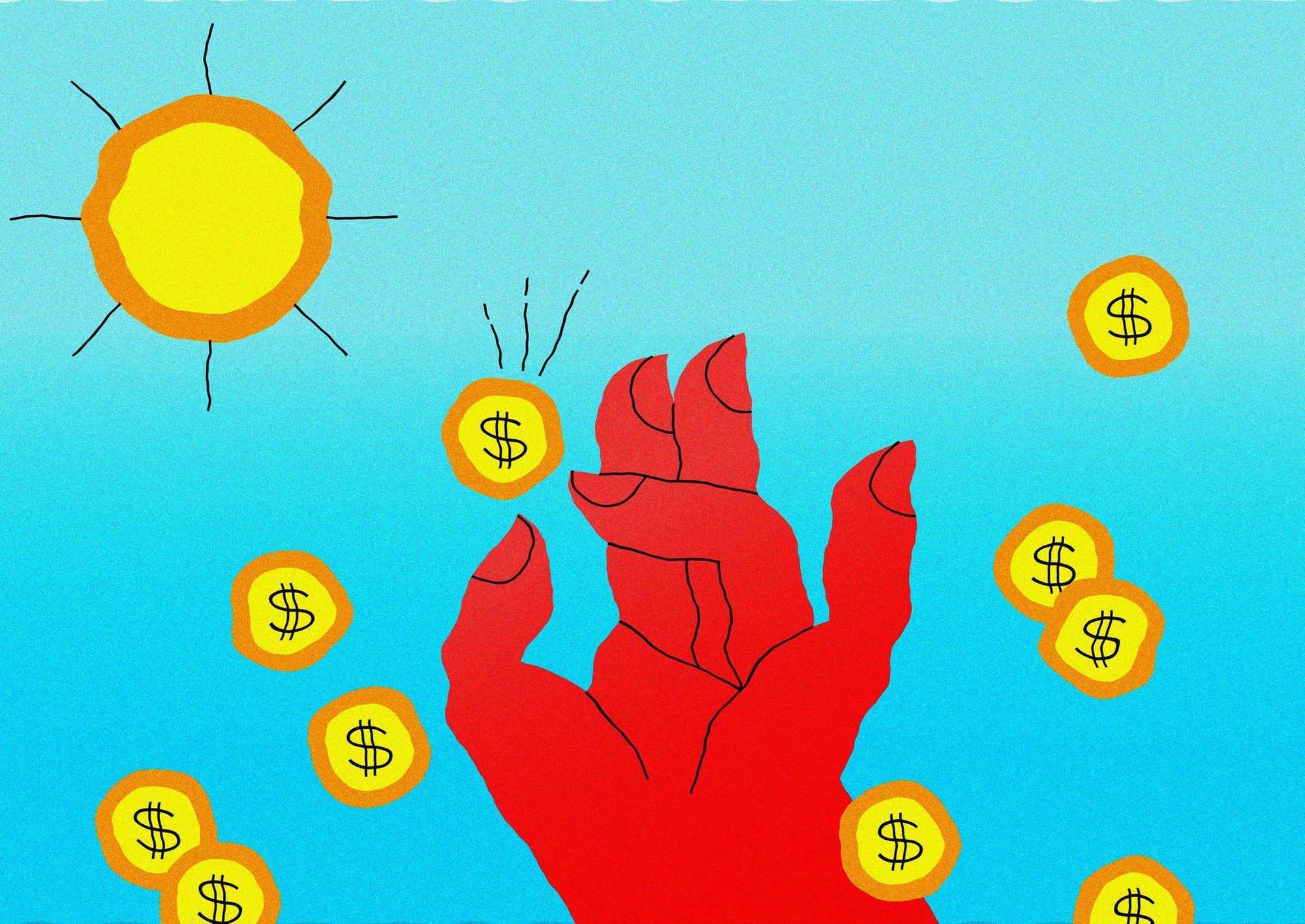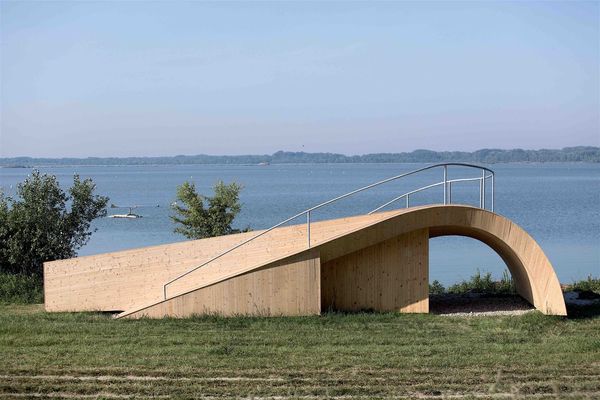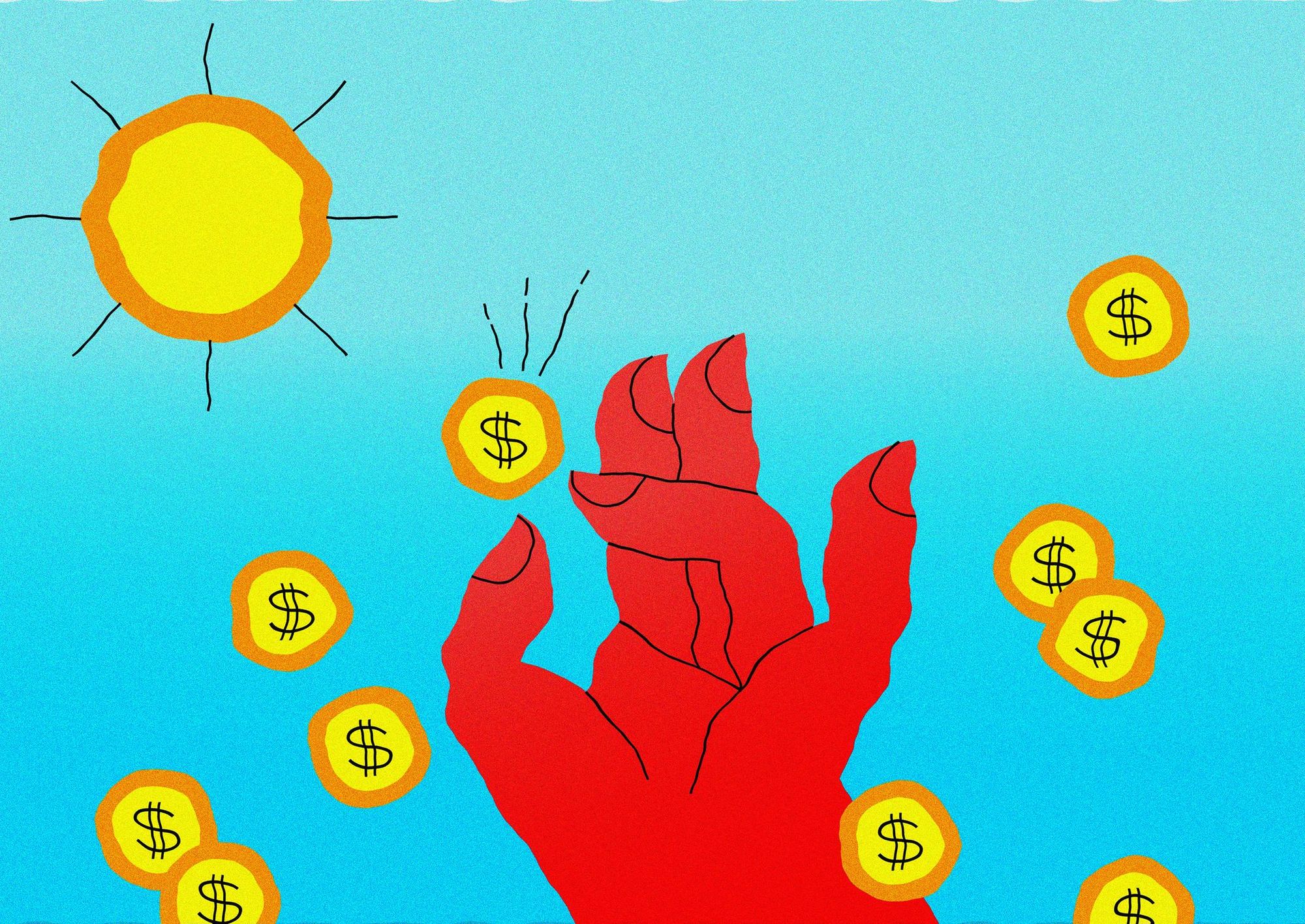We have experienced an extreme heatwave in the last few weeks, with temperatures of 36-38 degrees. How vulnerable are we to extreme weather? Are there measurable economic and social impacts of the heatwave? Read our article to find out where we give some tips to avoid heatstroke too.
The other day I was traveling by train, and I decided not to spend my time listening to music or reading but to get on with my work: answering emails and doing some research. The temperature outside was 38 degrees; inside, it was probably even higher. So, unsurprisingly, I realized after 10 minutes that I could not take it anymore.
Climate change does not only manifest itself in the increase in extreme weather events such as hurricanes and tornadoes or higher average temperatures year after year. The increased number and intensity of heatwaves are also due to global warming, so it is increasingly important to study the economic impact of the periods of excessively hot weather that we just experienced. Summer days with 38 degrees will probably be the new normal.
David García-León and his colleagues have examined how the worst heatwaves of the last two decades have affected economic productivity and how this can be projected into the future. How will the situation change? Their study shows that an average summer heatwave can reach half of Europe, but the largest ones can cover up to 95 percent of the continent, paralyzing the affected regions. It was already known that extreme heat is a negative externality in our lives with negative biophysical and cognitive impacts, lowering the number of hours we can work and impairing our decision-making capacity. These consequences lead to an economic meltdown. But how big is the caused economic setback?
On average, a heatwave can reduce annual GDP by 0.3-0.5 percent, which, for example, means $2-3 billion for Poland in 2021. Overall, between 1980 and 2010, 0.2 percent of Europe’s potential GDP was lost due to extreme heatwaves. Of course, there are significant differences between European countries. A north-south gradient can be seen in the data, as the southern part of Europe is more exposed to extreme heat, and its economy is more dependent on the weather, with more outdoor production in Mediterranean countries than in Scandinavia. Thus, Nordic economies are less affected by heatwaves.

Workers in outdoor sectors are most hit by scorching weather, but in today’s interconnected economic structure, if one industry slows down, the whole economy slows down. In the future, workers in indoor sectors will also be increasingly exposed to the heatwaves, especially in Southern Europe and Central Europe. If the planet’s temperature rise will not slow down and sweltering days will occur at a similar rate, the economic impact of heatwaves will also become progressively more severe. While between 1980 and 2010, 0.2 percent of annual GDP was affected by heatwaves, the expected yearly average cost will rise to 0.77 percent by the period 2035-2045. The figure will reach almost 1 percent between 2045 and 2055 and 1.1 – 1.2 percent in the 2060s.
Cyprus is currently the country most exposed to heatwaves in the EU, but by 2060 Portugal, Spain and Croatia could also be facing economic deficits of up to 3 percent from intense heatwaves. On the other hand, the UK, Ireland, and Nordic countries can get off easy with annual GDP rates of 0 to 0.2 percent lost due to extremely hot days.
Increasingly frequent heatwaves and global warming are, of course, not only affecting GDP figures. Firstly, countries with more moderate weather conditions will face climate migration as rising temperatures make it impossible to grow many crops, rivers will dry up, and millions will be left with no option but to leave their former lives behind.
Moreover, perhaps the most crucial factor is the protection of human health. The heatwave is felt most severely in concrete-paved urban areas, so cities need to prepare for increasingly hot summers in the future. While the 20th-century city was built for cars, in the 21st century, the focus is on people, and pedestrian traffic must be prioritized as cities develop. Trees are probably the most apparent shelter from the heat. They are not just producing oxygen and removing carbon dioxide from the air, but their shades also provide a 1-2 degrees cooler temperature than the direct sun. Just as we ventilate at home on warm days, the modern city also needs fresh air corridors where the air can circulate freely, relieving the summer’s sweltering heat.
But our cities can only be partially blamed for the plight. Protecting our physical health is also our own responsibility. It is crucial to stay always hydrated on scorching days. We must drink these days even when we are not feeling thirsty to minimize the risk of dehydration. It is also important to avoid drinks that get us dehydrated, so we should not quench our thirst with coffee or alcoholic beverages. In addition, it is also better to choose water instead of sugary drinks. Perhaps the most intuitive way to beat the summer heat is to not go out in the sun and stay indoors while keeping the air moving in our apartment, either by creating a draught or using a fan.
Once we are sure that we are no longer exposed to the health risks of extreme heat, we should look around and help others, especially children and the elderly. Other vulnerable groups are pregnant women and people with reduced mobility. If you notice that someone is dizzy, shivering, and not sweating in the heat, they are probably suffering from heatstroke or heat exhaustion. We should take them to a colder place, give them a drink, and make sure they can get home safely. We can also give them a hat to protect them from the direct sun.
The economic impacts of heatwaves are important, and we must prepare for their future consequences, but human life, health, and the preservation of our homes are even more vital. Thus, tackling climate change is an extremely critical issue. However, the current plight is that we cannot slow down global warming. What we can and should do is pay attention to others, so for everyone, summer can be about the beach and ice cream, not sunstroke and hospital.

A pickle jar’s worth of chance—the pickled cucumber program of Babka Deli and Kiútprogram

Workshop homes from Moscow to Berlin










